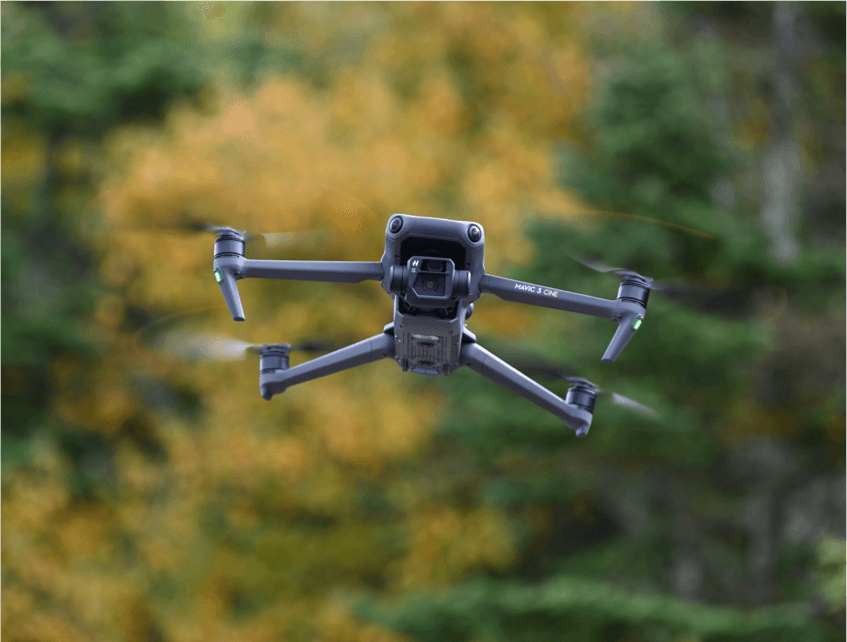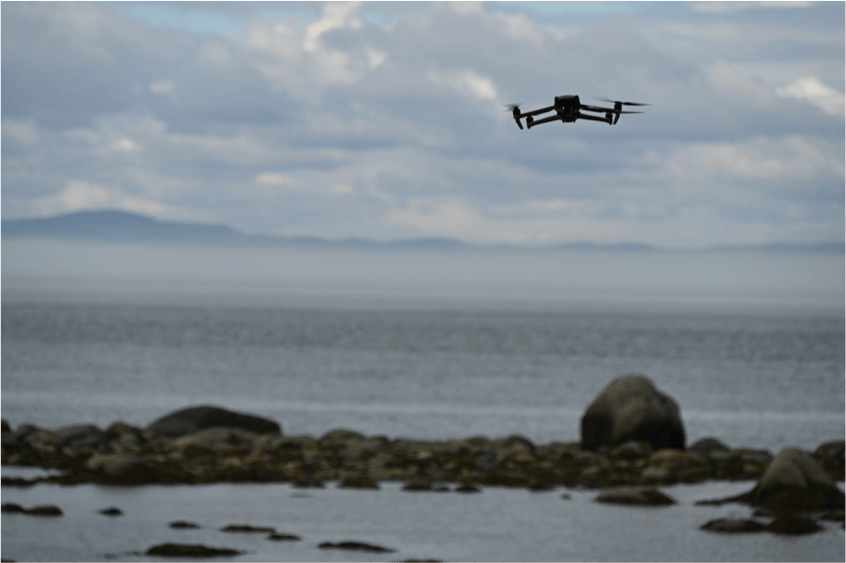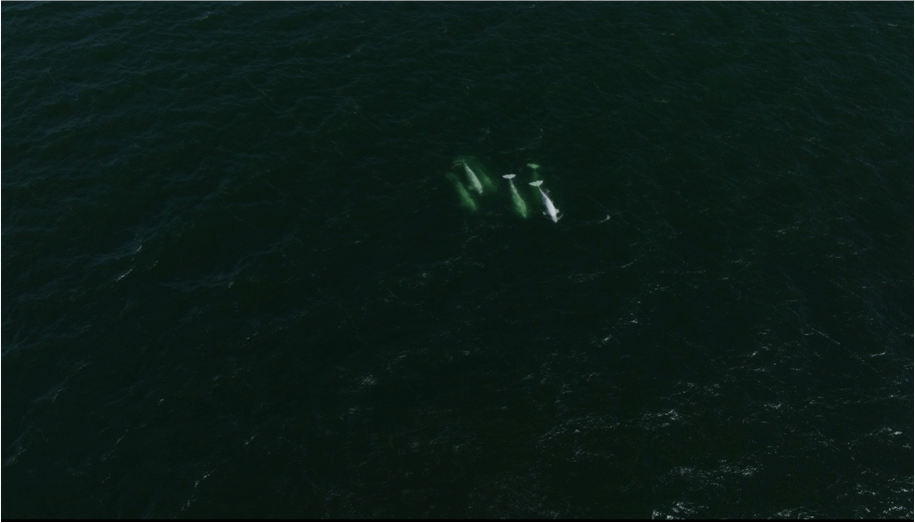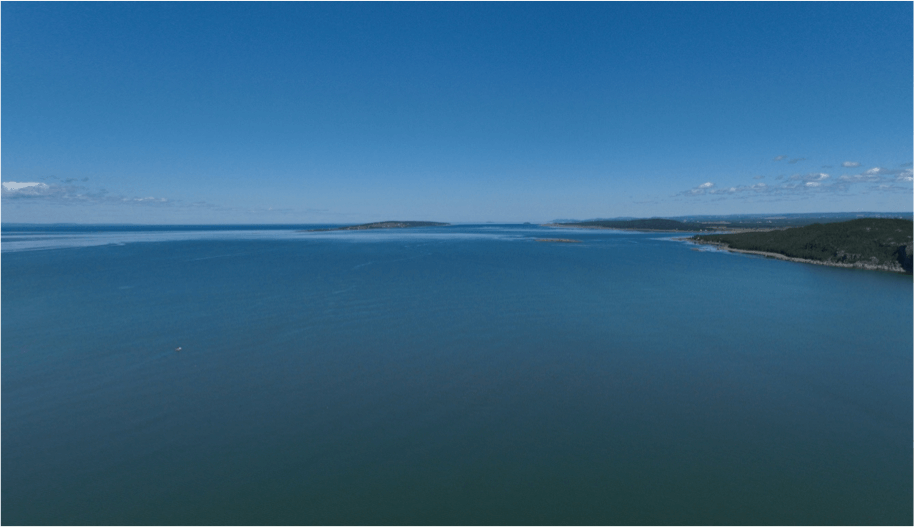With the growing popularity of drones, it is increasingly common to see spectacular images of cetaceans. From herds of migrating harp seals to foraging blue whales, these videos can kindle a desire to become an amateur wildlife videographer. Despite the newfound fascination for these devices, it should be kept in mind that, without a permit, approaching marine mammals with any type of drone is an illegal activity that can represent an additional threat to their well-being. Let us therefore clarify the legal frameworks in place in Quebec and across Canada that currently protect whales, seals and, by extension, other wildlife as well.
Grey areas
Before initiating a flight, anyone flying a drone weighing more than 250 g must ensure that they have obtained a drone pilot certificate from TransportCanada and have registered their device. When flying drones, it is essential to comply with all clauses of the Canadian Aviation Regulations. These regulations cover a number of facets of drone piloting such as distances to maintain from airports and passers-by, registration instructions, maximum altitude, etc. Unfortunately, they do not provide guidelines for the correct conduct to adopt vis-à-vis wildlife, let alone marine mammals in particular. In the mind of a would-be pilot, these grey areas can appear to be open for interpretation.
Another grey area concerns those who fly drones weighing less than 250 g, as these devices lie outside the Canadian Aviation Regulationsin certain respects. For these smaller aircraft, TransportCanada stipulates that they be piloted in a safe manner and recommends (but does not legally require) that they be operated within one’s field of view, at a safe distance from passers-by and at a safe altitude. However, here again, none of these recommendations makes any mention of wildlife. It would therefore appear that flying drones above marine mammals is permitted, but this is not the case.
Indeed, regardless of the size of the device, regulations protecting marine mammals are not dictated by Transport Canada, but rather in a number of other federal and provincial laws aimed at wildlife conservation.
Restricted zones
In Canada, marine mammals are protected from drones under the Marine Mammal Regulationsand the Species at Risk Act, as well as the Act respecting the conservation and development of wildlifein Quebec. These legal provisions all state in one way or another that it is illegal to approach a marine mammal without a permit, regardless of the size of the drone being used. The following paragraphs take a closer look at the content of each one of these provisions…
The Marine Mammal Regulations are the most restrictive ones in the country and concern all species of marine mammals. These Regulations state that whenever an aircraft (including any type of drone) operates at an altitude below 304.8 metres (1,000 feet) and within 926 metres (0.5 nautical miles) of a marine mammal, it is forbidden to manoeuvre the device so as to approach the animal or in such a way that might disturb it. In this context, “manoeuvre” means any change of direction or altitude, as well as any take-off or landing (on land or water) carried out with the aim of approaching or disturbing a marine mammal. According to these Regulations, any intentional approach or passing within 0.5 nautical miles of a marine mammal with a drone is therefore illegal without a permit.
The more restrictive Species at Risk Actonly applies to threatened or endangered species, which in Quebec include the beluga whale (St. Lawrence Estuary population), the North Atlantic right whale, the blue whale (Atlantic population), the harbour seal (Lacs des Loups Marins subspecies) and the northern bottlenose whale. For each of these species, it is forbidden to harm or harass them in any way. Once again, flying drones near these vulnerable animals is therefore prohibited in order to limit any disturbance that might result from their use.
In Quebec, the Act respecting the conservation and development of wildlife is another relevant law that regulates the operation of drones in proximity to marine mammals. It prohibits the wilful pursuit, mutilation or killing of any animal with an aircraft of any size. And, although it seems unlikely that a drone would be used to deliberately mutilate or kill a marine mammal, pursuing these animals with the goal of capturing impressive video footage is very often the goal of drone operators. Once again, wildlife is protected from this type of activity.
Approaching other protected species
It should be noted that the aforementioned legal provisions are not limited in their scope to marine mammals only, as they also protect other animals from the presence of drones. For example, the Species at Risk Act covers seals as well as birds or any other species at risk. Additionally, Quebec’s Act respecting the conservation and development of wildlife protects any wild mammal, bird, amphibian or reptile, while a number of migratory bird species are protected under another piece of legislation, the Migratory Birds Regulations. Before approaching any animal, it is therefore wise to carefully familiarize oneself with current regulations that may protect it.
Outside regulated areas
Even if we disregard the allure of being able to peer down on cetaceans from above, some drone enthusiasts may still desire to operate their craft over the vast waters of the St. Lawrence. However, here again, caution is advised, as flying drones is prohibited at a number of locations. These include federal and provincial parks, certain nature reserves, ports and many others.
At Parks Canada and SÉPAQ, the restrictions are clear. In order to ensure the protection of wildlife, public safety and the quality of the visitor experience, the use of drones for recreational purposes is prohibited on these lands. Before flying a drone in any of these parks, a permit must be obtained from the corresponding authorities.
Beyond these parks, other locations may enforce bans on drone flying for any number of reasons. For example, to protect migratory birds, the use of drones in the Cap Tourmente National Wildlife Area is prohibited. At the Gros-Cacouna seaport, such devices are banned for the safeguard of port activities. While far from exhaustive, this list shows that there are a host of places that restrict the use of drones, often unbeknownst to the public.
Before launching a drone, it is therefore essential to ensure that the site in question does not lie in a zone in which restrictions apply.
In the event of a discrepancy, the Marine Mammal Regulations, the Species at Risk Act, the Wildlife Conservation and Development Act, and, in restricted areas, local regulations take precedence over the content of this article.








